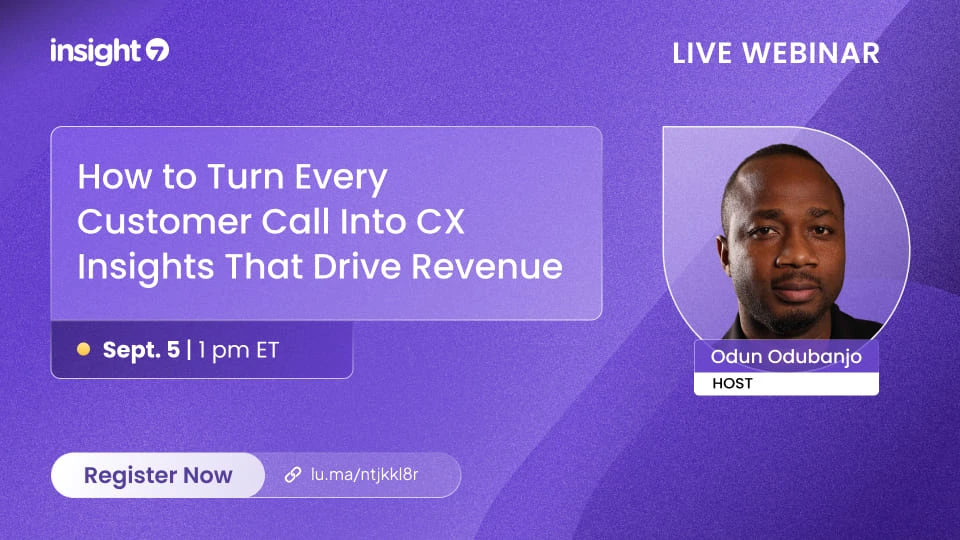How to Analyze User testing interviews
-
Bella Williams
- 10 min read
The section on user interview analysis delves into the significance of utilizing structured techniques to glean insights from user testing interviews. As you engage in analyzing user feedback, it's crucial to approach the data systematically. Start by collecting and organizing all relevant data from your interviews. This foundation is essential for identifying patterns and themes that emerge in user responses.
Next, focus on recognizing both positive and negative feedback. Understanding these sentiments helps in accurately interpreting user perspectives and refining product offerings. By highlighting distinct opinions and repeated themes, you can transform raw data into actionable insights. Ultimately, a thorough analysis will not only improve your products but also enhance user satisfaction, providing invaluable information for future developments.
Introduction to User Interview Analysis
User Interview Analysis is a crucial step in understanding users' needs. By conducting interviews, we gather insights that reveal their pain points and preferences. This direct feedback allows businesses to align their products or services with user expectations, enhancing overall satisfaction and engagement.
Analyzing user interviews involves careful organization and pattern recognition. It is essential to consolidate the interview data thoughtfully to spot recurring themes and insights. Through this analysis, we can identify common challenges and desires, which help in making informed decisions and strategic improvements. Ultimately, effective user interview analysis transforms qualitative feedback into actionable steps for better user experiences.
Generate visualizations from your qualitative data. At Scale.

Preparing for User Interview Analysis
Preparing for User Interview Analysis involves several key steps that ensure meaningful outcomes from your interviews. Initially, establishing clear objectives is critical. This means determining what specific insights you wish to gather, whether that’s understanding user pain points or gathering feedback on specific features. Having well-defined goals guides your questions during the interview and helps maintain a focused analysis later.
Next, selecting key participants should align closely with your objectives. Choose a diverse group of users to ensure varied perspectives and insights. Consider demographic factors, usage patterns, and other relevant criteria to maximize the breadth of information collected. Once your objectives and participants are in place, you can approach the interviews with confidence. This structured preparation will facilitate a deeper understanding of user needs and behaviors, laying a solid foundation for your analysis.
Establishing Clear Objectives
Establishing clear objectives is a critical step in user interview analysis. Before beginning your analysis, define what you hope to achieve through the interviews. These objectives will guide your questioning and help you focus on essential aspects of user behavior and feedback. For instance, identifying pain points or understanding user needs can shape your interview approach, ensuring that you gather the most relevant information.
Next, consider your specific objectives related to the user experience. Are you looking to improve a particular feature or overall functionality? By outlining these goals, you set a foundation for meaningful data collection and analysis. Clear objectives not only streamline the interview process but also enhance the quality of insights you obtain. This structured approach will ultimately lead to more effective conclusions and actionable outcomes from your user interviews.
Selecting Key Participants
Selecting the right participants is crucial for effective user interview analysis. The ideal participants should represent your target audience, encompassing a variety of demographics, behaviors, and preferences. This diversity ensures that insights gathered will be representative and inclusive, minimizing bias in your findings. Start by identifying key characteristics of your user segments, such as age, profession, and usage habits. You want to engage individuals who can provide varied perspectives based on their experiences with your product or service.
Next, develop a strategy for recruiting these participants. Utilize existing customer databases, social media platforms, and community forums to reach potential interviewees. Consider incentivizing participation with rewards or discounts, which can help boost engagement. Finally, while it’s essential to have a range of participants, ensure you do not go overboard; a select group of 5 to 10 individuals is often sufficient to uncover meaningful insights. This careful selection process will lay a solid foundation for your user interview analysis, ensuring you gather valuable data that enhances your understanding of user needs.
Evaluate Performance on Customer Calls for Quality Assurance.
Conducting Effective User Interview Analysis
Conducting effective user interview analysis is crucial for transforming raw interviews into actionable insights. To start, collecting and organizing data effectively sets the foundation for analysis. Always ensure that you document each interview meticulously, noting key quotes and themes. This method of systematic documentation helps prevent valuable insights from becoming lost in the details.
Once you’ve gathered the data, the next step is identifying patterns and insights. Look for recurring themes, emotional responses, and suggestions that offer solutions. Analyzing user interviews allows for a deeper understanding of user needs and preferences, which can inform product development. This process is iterative; revisit the data multiple times to uncover nuanced insights. By methodically conducting user interview analysis, you position yourself to make informed decisions that resonate with your target audience.
Collecting and Organizing Data
Collecting data from user interviews is a crucial step for effective user interview analysis. Start by transcribing the interviews to capture every detail accurately. Whether you choose to use manual transcription or advanced tools, ensure that the transcripts are clear and accessible. Once transcribed, create a structured repository to organize the various interview responses. This can be done by using spreadsheets or specialized software that allows for easy categorization.
In addition to the transcripts, consider compiling quotes and notable moments that reflect users' experiences and feedback. This collection can support marketing efforts or product development. To further enhance understanding, segment the data based on themes such as user needs, challenges, and positive feedback. By organizing the data in this manner, you set the stage for a comprehensive analysis, allowing you to identify patterns and derive actionable insights from user feedback.
Identifying Patterns and Insights
Identifying patterns and insights is a crucial step after conducting user interviews. As you analyze the collected data, look for trends that emerge across multiple conversations. This process allows you to distill complex feedback into digestible insights, which can significantly influence product development. Start by categorizing responses based on common themes or recurring issues. This helps in recognizing what users consistently express.
Next, consider quantifying these insights. For example, if 70% of participants mention a particular pain point, that’s a strong signal that it requires attention. Utilize tools that allow you to visualize this data. Graphs and charts can make patterns more apparent, and they aid in presenting your findings to stakeholders. By systematically extracting and organizing insights from all interviews, you create a foundation that informs actionable decisions, enhancing the overall user experience.
Conclusion of User Interview Analysis
In conclusion, User Interview Analysis serves as a vital tool for understanding user needs and enhancing product development. By systematically reviewing interview data, patterns and insights emerge, allowing teams to make informed decisions. This analysis not only highlights common pain points but also reveals opportunities for innovation, leading to improved user experiences.
Effective analysis should culminate in actionable insights that drive strategies forward. Summarizing findings through themes and key takeaways creates a comprehensive narrative, making it easier for stakeholders to grasp the essential user perspectives. Ultimately, these insights become the backbone of user-centered design, bolstering the overall quality of products and services offered.
User Interview Analysis is a critical step in extracting valuable insights from user testing interviews. This process begins with collecting and organizing the data obtained from interviews. Start by transcribing the conversations thoroughly, ensuring no detail is overlooked. Once transcribed, categorize the data into themes based on user feedback, either positive or negative. This categorization helps streamline the analysis and highlights significant areas of interest.
Next, it's crucial to identify patterns within the data. Review the categorized comments for recurring themes and sentiments. Look for unexpected insights that can inform your product development or user experience strategies. By synthesizing this information, you can create actionable recommendations tailored to address user needs and enhance your offerings. Ultimately, User Interview Analysis plays a vital role in making informed decisions that resonate with users.







